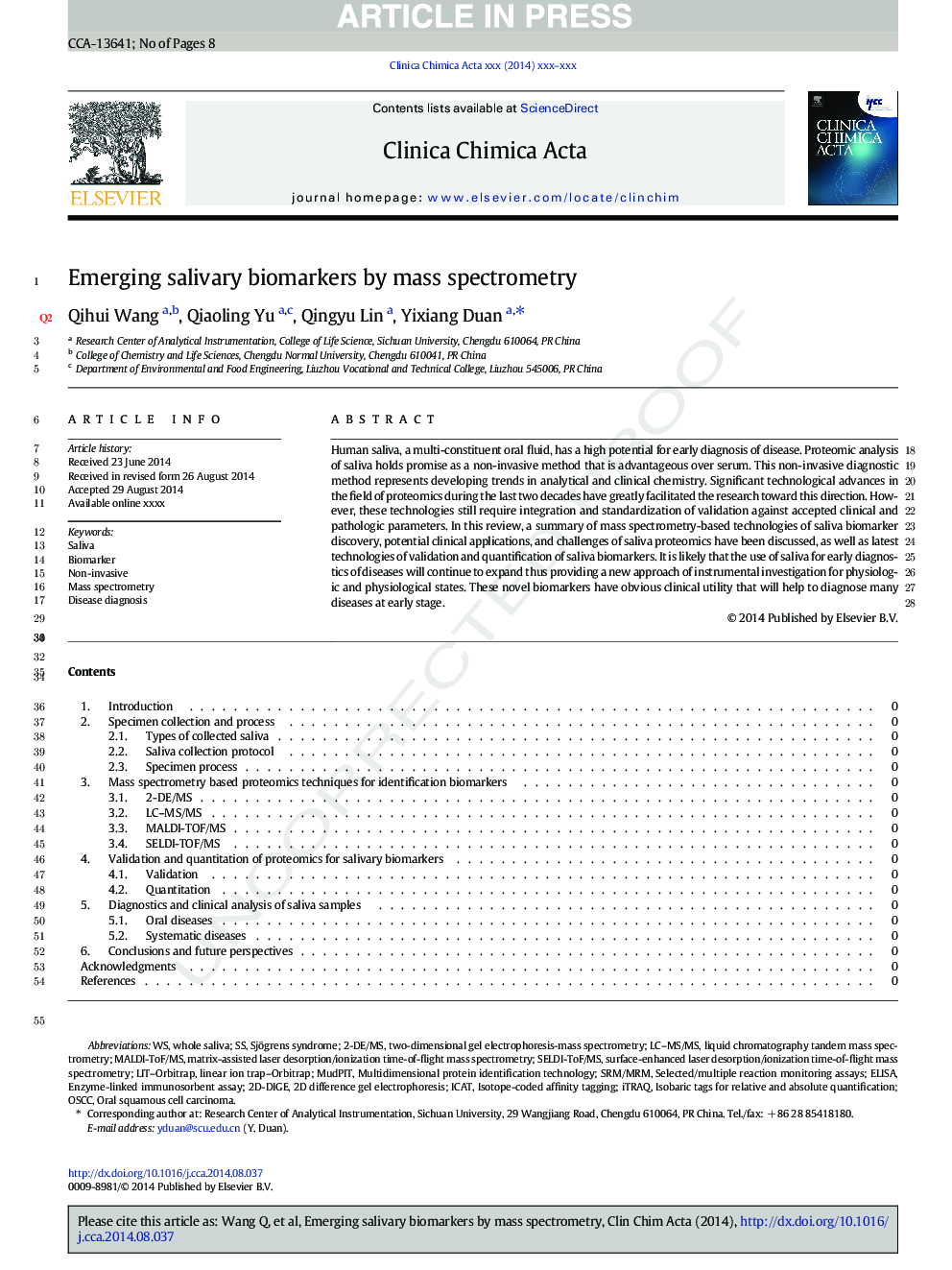| Article ID | Journal | Published Year | Pages | File Type |
|---|---|---|---|---|
| 8311380 | Clinica Chimica Acta | 2015 | 8 Pages |
Abstract
Human saliva, a multi-constituent oral fluid, has a high potential for early diagnosis of disease. Proteomic analysis of saliva holds promise as a non-invasive method that is advantageous over serum. This non-invasive diagnostic method represents developing trends in analytical and clinical chemistry. Significant technological advances in the field of proteomics during the last two decades have greatly facilitated the research toward this direction. However, these technologies still require integration and standardization of validation against accepted clinical and pathologic parameters. In this review, a summary of mass spectrometry-based technologies of saliva biomarker discovery, potential clinical applications, and challenges of saliva proteomics have been discussed, as well as latest technologies of validation and quantification of saliva biomarkers. It is likely that the use of saliva for early diagnostics of diseases will continue to expand thus providing a new approach of instrumental investigation for physiologic and physiological states. These novel biomarkers have obvious clinical utility that will help to diagnose many diseases at early stage.
Keywords
isotope-coded affinity taggingSRM/MRMSjogrens syndromeSELDI-TOF/MSOSCCMudPITITRAQICAT2D-DIGELC–MS/MSmatrix-assisted laser desorption/ionization time-of-flight mass spectrometrysurface-enhanced laser desorption/ionization time-of-flight mass spectrometryisobaric tags for relative and absolute quantificationSalivaWhole salivaBiomarkerELISAEnzyme-linked immunosorbent assayDisease DiagnosisMass spectrometryNon-invasiveMultidimensional protein identification technologyMALDI-TOF/MSoral squamous cell carcinomaliquid chromatography tandem mass spectrometry
Related Topics
Life Sciences
Biochemistry, Genetics and Molecular Biology
Biochemistry
Authors
Qihui Wang, Qiaoling Yu, Qingyu Lin, Yixiang Duan,
